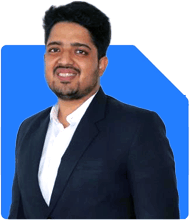Hello Sir,
I want to invest lumsum 4 lakh in 3 to 5 mutual funds for my daughter's education for next 10 to 12 years.
She is 5 years old, could you please suggest couple of funds which can help me to build around 40 lakhs.
A PPF account was opened 2 years ago, I want to build 1cr for her education.
And please let me know if I need to invest more.
Your help is highly appreciated.
Best regards
Ans: Investing for your daughter’s education is a wise decision. Starting early with a clear goal makes a strong financial foundation. With a 10-12 year horizon, you have ample time to benefit from compounding. Here's a 360-degree strategy to help you reach your goal.
Education Goal and Target Corpus
You aim to build Rs 1 crore for her education. Your current investment plan is for Rs 40 lakhs through mutual funds, while PPF can serve as a stable, tax-saving addition.
Considering education inflation, having diversified investments can help. PPF is a good foundation, but mutual funds provide growth essential to meet the remaining target.
Lump Sum Investment in Mutual Funds
For a goal of 10-12 years, mutual funds are a smart choice. However, avoid investing in direct or index funds. Actively managed mutual funds offer benefits such as:
Better Growth Potential: Fund managers with expertise work actively to achieve higher returns.
Portfolio Adjustments: Actively managed funds adjust to market changes, aiming to reduce risk and enhance returns over time.
Investing through an MFD (Mutual Fund Distributor) with CFP credentials also brings personalised guidance, helping you to make more effective choices.
Here’s a recommended structure for your lump sum of Rs 4 lakhs:
40% in Large-Cap or Flexi-Cap Funds: These funds provide stability and steady growth. Over time, they generally perform well, thanks to their exposure to established companies.
30% in Mid-Cap Funds: These funds balance between growth and stability. Mid-cap companies, while moderately risky, provide good returns over a 10-year horizon.
30% in Small-Cap Funds: Small-cap funds can generate high returns. With a long-term horizon, these funds have time to overcome market fluctuations.
Benefits of Actively Managed Funds Over Index Funds
If you’re considering index funds, it's essential to understand their limitations:
Limited Flexibility: Index funds replicate market performance, so returns are often limited to the index’s growth rate. Actively managed funds, however, may outperform the index, especially over a long horizon.
No Market-Driven Adjustments: Index funds don’t adjust according to market conditions. Active funds provide flexibility, as managers can respond to market changes.
Given these factors, actively managed funds could be a more effective choice for your goals. This allows you to benefit from professional fund management focused on achieving optimal returns.
Need for Additional Investments
Achieving Rs 1 crore for education may require additional contributions. Here’s why:
Annual Growth Requirement: To reach your target, additional investments will help to offset potential market downturns.
PPF Growth Limitations: PPF is stable but has a fixed interest rate. It may not fully meet the corpus requirement on its own.
Suggested Additional Monthly Investment
To bridge the gap to Rs 1 crore, consider a monthly SIP. Even a small SIP amount, invested consistently, can grow significantly over 10-12 years. Aim for:
Monthly SIP of Rs 5,000 to Rs 7,000: This could be invested in balanced funds or large-cap funds. Balanced funds offer steady growth with a mix of equity and debt.
Gradual Top-Ups: If your income allows, consider increasing the SIP amount annually by 10%. This boost enhances the compounding effect, helping you reach your target.
Tax Considerations for Mutual Fund Investments
Understanding the tax implications can help you maximise returns:
Equity Funds: Long-term capital gains (LTCG) above Rs 1.25 lakh attract a 12.5% tax. Short-term capital gains (STCG) are taxed at 20%.
Debt Funds: Gains from debt funds are taxed as per your income tax slab. Since your goal has a long-term horizon, you might consider equity-focused funds, which are generally tax-efficient over time.
Regular Review and Rebalancing
To keep your investment aligned with your goals, regular monitoring is key:
Annual Portfolio Review: This ensures that your investments are performing as expected. Rebalancing may be needed based on market performance.
Adjustments as Needed: Based on your progress, you may need to increase or decrease your SIPs, switch funds, or adjust the allocation.
Role of a Certified Financial Planner (CFP)
A CFP can bring expert insights and help you navigate through investment decisions, tax-saving options, and risk management. They can assist in portfolio optimisation, ensuring that your investments align with changing financial needs.
Finally
Building Rs 1 crore for your daughter’s education is achievable with a balanced approach. Combining PPF and mutual funds gives you growth, stability, and tax efficiency. Additional investments through SIPs can bridge any shortfall, providing you with peace of mind.
With a structured plan, consistent monitoring, and adjustments along the way, you’re set to reach your goal.
Best Regards,
K. Ramalingam, MBA, CFP,
Chief Financial Planner,
www.holisticinvestment.in
https://www.youtube.com/@HolisticInvestment

























